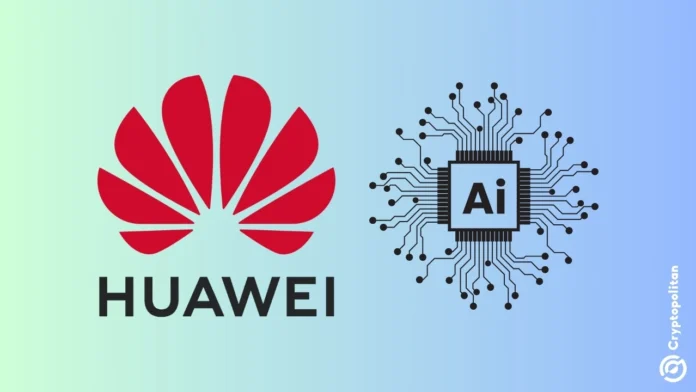Enacy Mapakame
Chinese firm Huawei plans to commence the mass production of its latest AI chips during the first quarter of 2025, despite US restrictions on the importation of advanced chips into the Asian country.
According to a Reuters report which cited two people familiar with the matter, Huawei is already battling to produce enough chips because of the US sanctions that bar the sale of US AI chips to China. The telecoms giant is at the center of a conflict between China and the US over trade and security, and was placed on a trade list that requires suppliers to have a license to ship any goods to the company.
This comes as the US imposed curbs on Huawei and other Chinese firms, on the basis that their tech advances would pose a national security risk to the US, although China denies such claims.
Huawei is already taking orders for its newest chip
According to Reuters, Huawei has already sent samples of the Ascend 910C to some tech firms and started taking orders. The Ascend 910C is Huawei’s latest chip, meant to compete with those made by US tech giant Nvidia.
However, the restrictions imposed by the US have impacted Huawei’s ability to get the yield with the chips coming from its manufacturing line not enough to make it viable.
Now, the newest chip – the 910C is reportedly being produced by top Chinese contract chipmaker – Semiconductor Manufacturing International Corp (SMIC) on its N+2 process. However, a lack of advanced lithography equipment has limited the chip’s yield to about 20%, according to one of the sources Reuters cited.
According to Reuters, advanced chips need yields of more than 70% for them to be commercially viable. Currently, Huawei’s most advanced processor, the 910B also made by SMIC has a yield of only about 50%.
This has made the tech firm to slash production targets and delay filling orders for that chip, according to the cited source.
The US restrictions affect more than Huawei
These US-imposed restrictions have also weighed on TikTok’s parent company ByteDance which reportedly ordered over 100,000 Ascend 910B chips this year and only managed to receive only 30,000 as of July, and this has been a slow pace to meet the company’s targets, according to another report by Reuters in September.
There are several other Chinese tech firms that have ordered from Huawei and complained of similar challenges, according to the sources.
“Huawei knows there is no short-term solution, given the lack of EUVs, so it will give priority to strategic government and corporate orders,” the source said.
The US restrictions include barring China from accessing extreme ultraviolet lithography (EUV) tech from ASML – a Dutch manufacturer.
ASML has also halted shipping its most advanced deep ultraviolet lithography (DUV) machines to China due to rules imposed by the US last year.
Additionally, some fabs have also been restricted from buying older ASML DUV models.
According to Reuters, SMIC is now demanding a premium of up to 50% for chips made on its advanced nodes, which are reportedly less advanced than those of Taiwanese chip-making firm TSMC, which uses enhanced ASDML DUVs.
Analysts and sources cited by Reuters have indicated that Huawei has supplemented its SMIC-made chips with those manufactured by TSMC. TSMC however recently notified the US authorities that one of its chips had been found in a Huawei 910B processor and the company has been ordered to stop shipment of its products to other Chinese customers.
The incident might be a sign of efforts by the Chinese firm to circumvent the trade restrictions. According to an AH report, Huawei might have used third parties such as Pengxinxu and Swaysure Technology to access the hardware.
Despite these challenges on the Chinese firms, there are reports that China is preparing to launch its largest-ever chip fund which will see the Asian giant raise an estimated $27 billion to bolster its and strengthen its semiconductor industry.
Land a High-Paying Web3 Job in 90 Days: The Ultimate Roadmap
